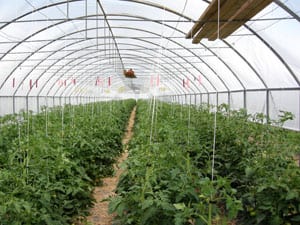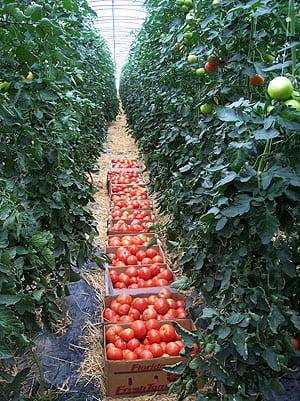… no matter who you are.
Eat local! For towns and cities small and large, the eat-local movement is a boon for farmers and consumers alike. You (the consumer) get your veggies fresh, while you (the farmer) can build a base of local buyers who know your products.
Tomatoes, cukes, and sweet peppers. Lettuce and spinach, arugula and swiss chard. For farmers who grow them, the season is always too short—and winter too long. Now some have adopted the high-tunnel approach to get ahead of the game.


And what is a high tunnel, exactly? Uh … well, I’ll grant you there’s no “exactly” to many a thing—high tunnels included. But whatever the specifics, they have much in common. For starters, this type of greenhouse is usually a plastic covered structure with less environmental control, relying on passive ventilation for cooling.
But like everything in agriculture, high-tunnel crops have can have insect pests. Plant pathogens. Weeds.
How do we help? Let us count the ways. Crafting a solid IPM plan is a great place to start. The plan lays out practices that help prevent pests, be they diseases, weeds or insects. Choosing pest-resistant varieties helps lessens the need for pesticides. Ditto with becoming familiar with a range of biocontrols while you’re still ahead of the game. Then there’s getting the ID’s right: learning the appearance or symptoms of pests that just happen to be checking out the premises. Once you’ve nailed the IDs, it’s time to scout early and often.
Diversifying and rotating crops plays a big role too. So does getting watering, ventilation, and fertilizing down to an art—a must-do, since too much or too little of any of these can encourage those pests you are trying to control.
Next time you are buying local – ask your local farmer how they include IPM in their production. You’ll find they are all doing their best to grow beautiful, delicious veggies for you.
Eat local!